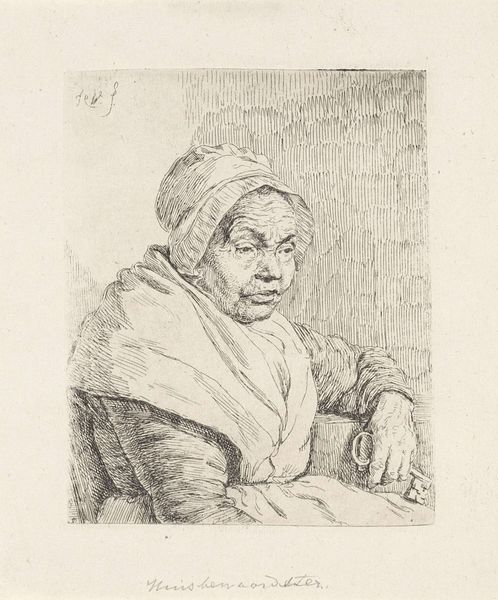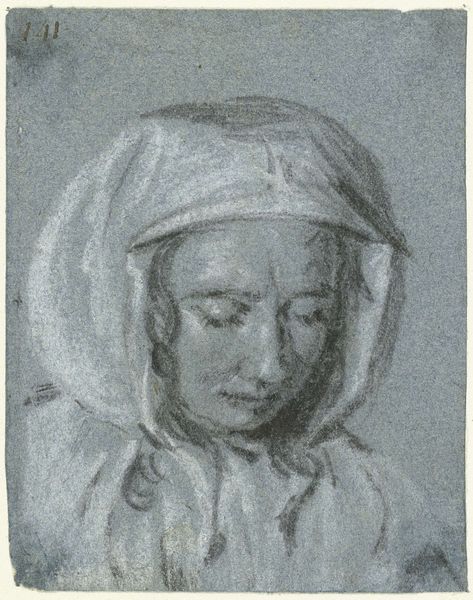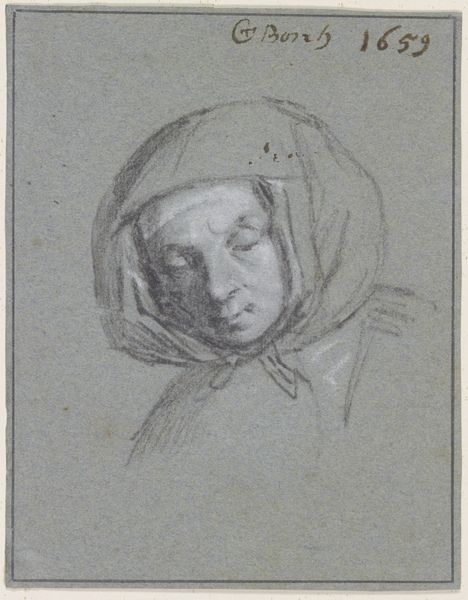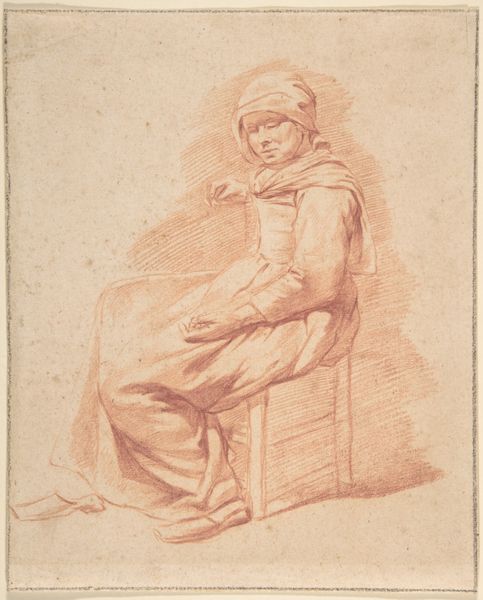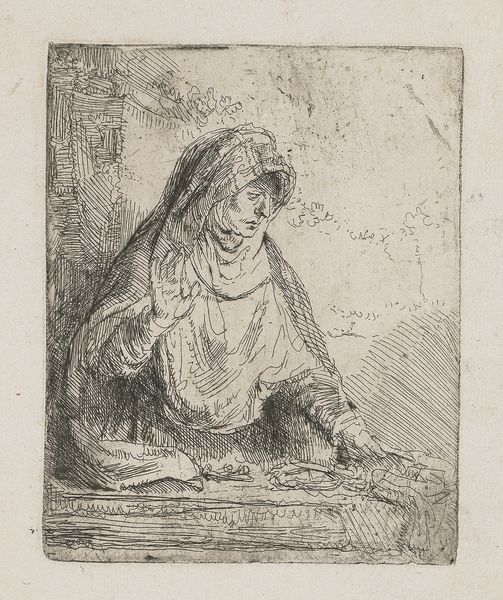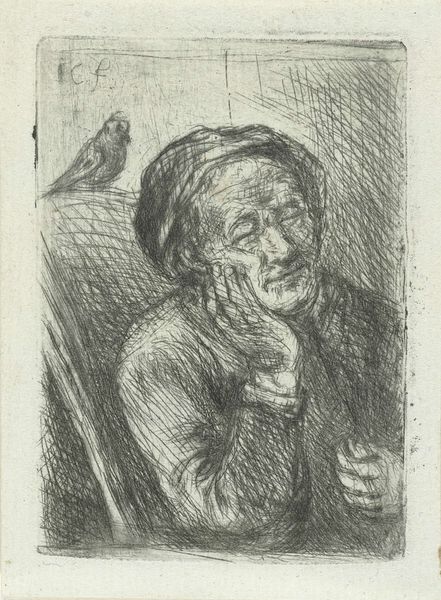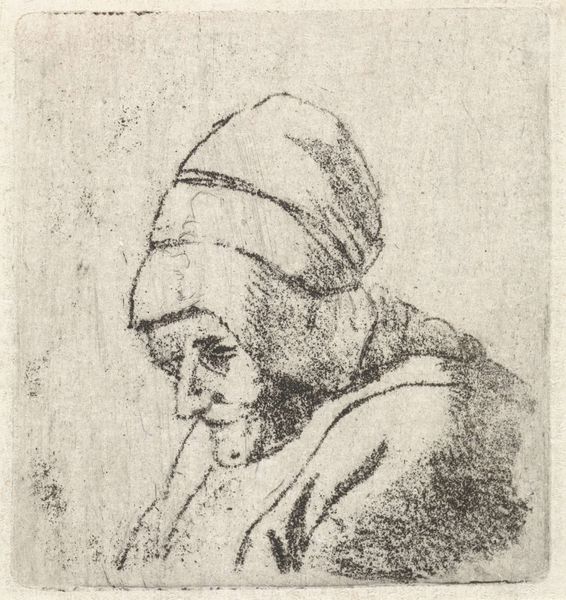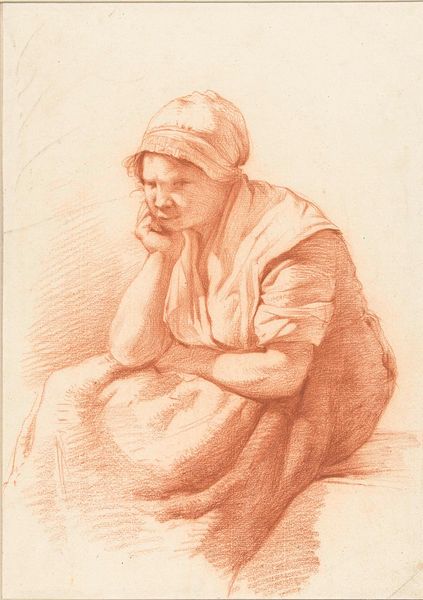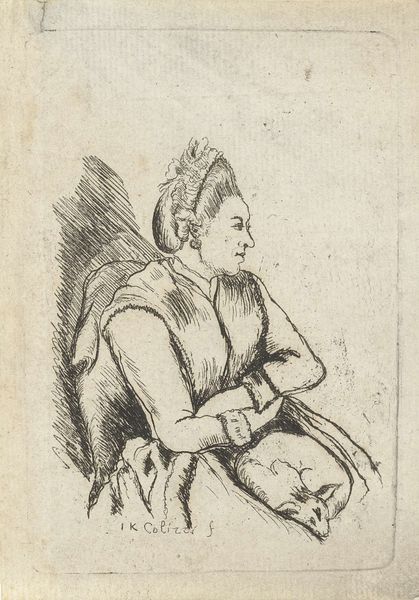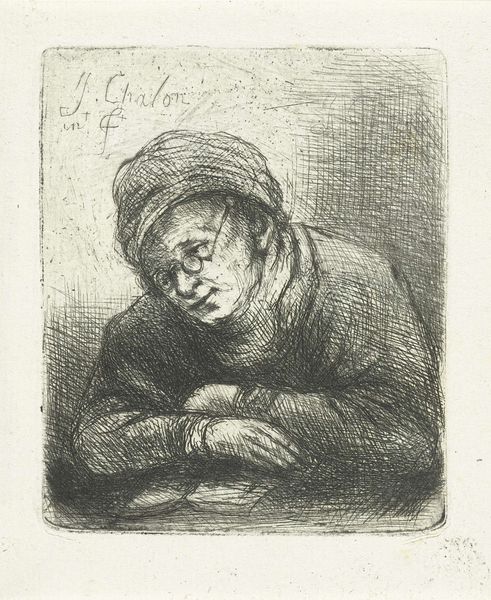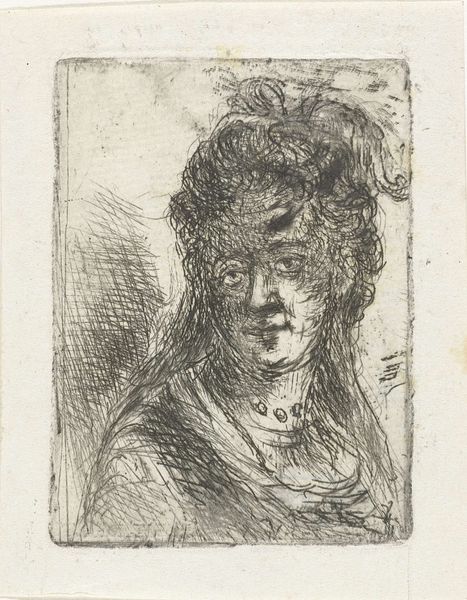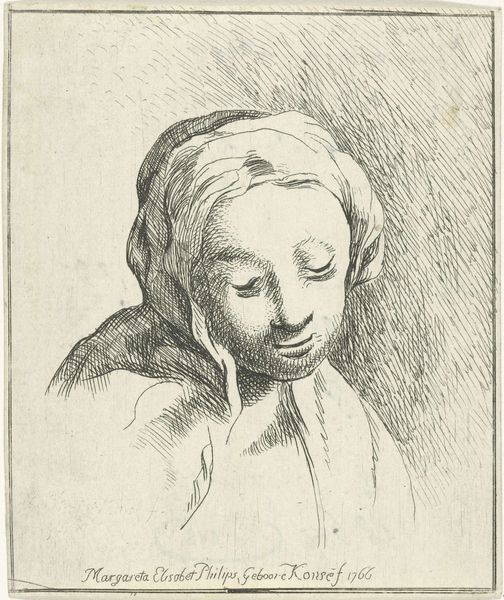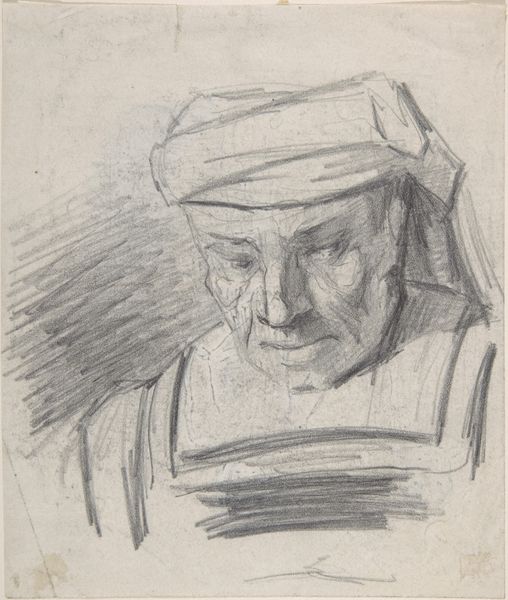
drawing, print, etching, pencil
#
portrait
#
drawing
# print
#
etching
#
pencil drawing
#
pencil
#
portrait drawing
#
rococo
Dimensions: height 219 mm, width 171 mm
Copyright: Rijks Museum: Open Domain
Curator: Let’s consider this piece, "Hoofd van vrouw met hoofddoek," or "Head of a Woman with a Headscarf," dating back to 1767 and crafted by Gilles Demarteau. It’s an etching, printed with both pencil and ink. What are your initial impressions? Editor: A profound sense of melancholy washes over me. Her closed eyes and the downward turn of her lips... it speaks of sorrow, doesn't it? Or perhaps, quiet resignation. Curator: Absolutely. Viewing this through the lens of the Rococo period, we might see it commenting on the restrictive social expectations placed upon women. The headscarf itself, a symbol of modesty and constraint. How does it resonate with contemporary discussions on identity and agency? Editor: It's striking how such a simple piece can convey so much. Headscarves carry enormous symbolic weight across cultures and throughout history. Here, the way it almost engulfs her face, pushing into shadow—is this a visual representation of cultural or personal suppression? What emotional narratives does this evoke, particularly concerning womanhood and cultural representation? Curator: I agree. Considering Demarteau’s wider body of work and the artistic trends of his time, it is impossible to disregard how this is both art historical commentary, but is relevant to discussions of social inequality today. Editor: The downcast gaze is heavy with centuries of unspoken stories. The shadows become a kind of veil themselves. This work functions almost like an archetype; it has all the qualities for a poignant visual reminder. Curator: Indeed. It becomes a timeless portrayal of introspective resistance, even quiet endurance. Editor: It leaves you contemplating the individual spirit enduring amidst systemic pressure, then and now. It makes you wonder about all those in similar positions today. Curator: Precisely. This image invites ongoing reinterpretation within a rapidly evolving cultural landscape. Editor: And makes me wonder, how do we collectively shift these persistent and negative symbolic visual patterns in the future? Thank you, as always, for illuminating such potent works with a powerful intersectional analysis.
Comments
No comments
Be the first to comment and join the conversation on the ultimate creative platform.
